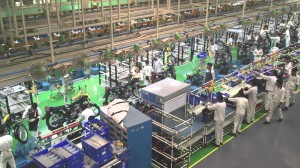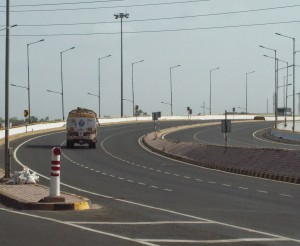Text: Bhargav TS
National Capital Region (NCR) was evolved after Maruti Suzuki was established in the country. Earlier in India, Pune and Chennai were the traditional clusters of auto component industry. After Maruti Suzuki setup their facility in Manesar, the industrial area was developed for its suppliers. NCR became another cluster. Multi-national enterprises (MNEs) established their factories in the clusters to utilise cluster network. The region has its own problems, though not unique problems like land, power and movement of goods. The automotive industry in Northern India is witnessing certain trends that might give them respite from such issues. New emerging automotive clusters, adoption of higher levels of automation and infrastructure development initiatives seem to be helping the region to keep up its prominence in the automotive space as a destination of choice for both vehicle and component manufacturers.
NCR consists of 3 states namely; Delhi, Haryana and Uttar-Pradesh. The automobile industry is probably the biggest industry in the state of Haryana, which ranks first in India in the production of passenger cars, motorcycles and tractors. Therefore, this cluster largely follows the traditional pattern of auto clusters led by assemblers that served as lead firms. Haryana accounts for 50% of total small passenger cars and two-wheelers production in India. Market leader Maruti Suzuki is based in Gurgaon and Manesar in Haryana. The largest two-wheeler manufacturer in India, Hero along with the other large two wheeler manufacturers, Honda and Yamaha are also present in the state.
While the emerging areas like the industrial cluster in Rajasthan seem to be a preferred destination for setting up new plants, the existing automotive clusters like in Manesar, Haryana continue to face infrastructural and labour challenges. Smaller places like Kanpur, Ludhiana and Lucknow are putting up satisfactory performance in terms of labour environment, availability of land and power situation.
Sky-rocketing prices of land and also its availability in the existing automotive clusters in the NCR and adjoining areas of Haryana are posing a serious challenge. Industry veterans say, the land that earlier cost about Rs 1,000 per square foot is now being sold at Rs 15,000. It will be impossible to recover this kind of cost for those companies who are looking to set up a Greenfield projects in the region.
This has led to the emergence of new regions like Bhiwadi, Neemrana and Tapukara in Rajasthan as the next destination for the companies looking to set up new plants. Its proximity to the NCR and western markets of India make it even more sought after destination. The presence of Honda Cars India (HCI) and Honda Motorcycles and Scooters India (HMSI) has acted as a catalyst in the development of an automotive zone in this region. Presence of major automotive component makers like Shriram Piston also added to the value of the region.
In the states of Punjab and Uttar Pradesh land availability is not an issue. A significant number of Tier 2 and 3 suppliers have set up shop in places like Ludhiana, Jalandhar, Kanpur and Lucknow. The production facility of Tata Motors in Lucknow that was set up in 1992, produces commercial vehicles, which has fueled the development of some component manufacturers. The company has further plans for expansion which has encouraged some suppliers to consider setting up shops there.
Like the rest of the country, north India is also facing several issues including non-availability of manpower and the presence labour unions. The strike that happened in Maruti Suzuki’s plant couple of years back in Manesar have showed that a lot of union activities are taking place which might come in the way of expansion plans of several companies with manufacturing units in these areas. In terms of labour situation Rajasthan and Uttar Pradesh are being preferred because of favourable government policies in these states.
To tackle the situation many component makers have undergone a strategic shift from conventional method of manufacturing to completely CNC line in order to cope up with rising labour crisis. Many companies took the downturn as an opportunity and invested in the plant up-gradation.
Delhi and Haryana have excellent road network which facilitate faster transportation of goods from the point of production to the point of consumption. The governments of upcoming destinations like Rajasthan and Uttar Pradesh are also focusing on good network of roads to increase connectivity with the leading markets. Close to 40% of the 1,483 km Delhi-Mumbai Freight Corridor (DMFC) falls in Rajasthan and the availability of land on both sides of road has accelerated the development of an auto zone in the state.
The industries in Uttar Pradesh have also benefited out of the newly constructed Yamuna Expressway Industrial Development Authority (YEIDA). The 165 km expressway between Greater Noida and Agra, ensures planned development of areas along the route. Due to the newly created clusters like Neemrana and Bhiwani there are many such cluster are evolving and the NCR region is widening up its geographies. The industries being set up at Neemrana by Japanese entrepreneurs have made this region more or less a hub of Japanese industries. Currently companies like HCI, Nissin Brakes India, Nippon Steels, TPR Auto have their facilities in the cluster. The Shahjahanpur-Neemrana-Behror is a part of NCR which will give a major boost for development.
As a welcome move recently the National Green Tribunal (NGT) ordered that all 10-year-old diesel vehicles and 15-year-old petrol vehicles will be taken off the roads in the NCR. The NGT’s verdict will reduce the pollution level in the city. Now, Euro II and Euro I cars, which are very polluting, will be phased out. The government should ensure that cars must meet Euro V by 2016. Stringent timeline should be set for introduction of Euro VI by 2021. Rapid improvement in fuel quality and vehicle technology is needed across the country to reduce direct exposure to toxic vehicular fume. This nationwide action will benefit Delhi and NCR that has emerged as a pollution hotspot.
On the other hand, NCR is also facing tough competition from South and North India, as Gujarat is attracting more investors by providing lot of incentives and geographically well suited for exports to Europe and other western countries. South region is also giving tough fight to NCR as region is already developed with the help of home grown players like TVS, Rane and Amalgamation Group. Though West and South region being a favorable destination for many companies, NCR still continue to attract investors with the formation of new clusters in the region. If the government of the respected states provide best infrastructure, power and good labor policy, NCR will continue to be the biggest auto hub of the country.














